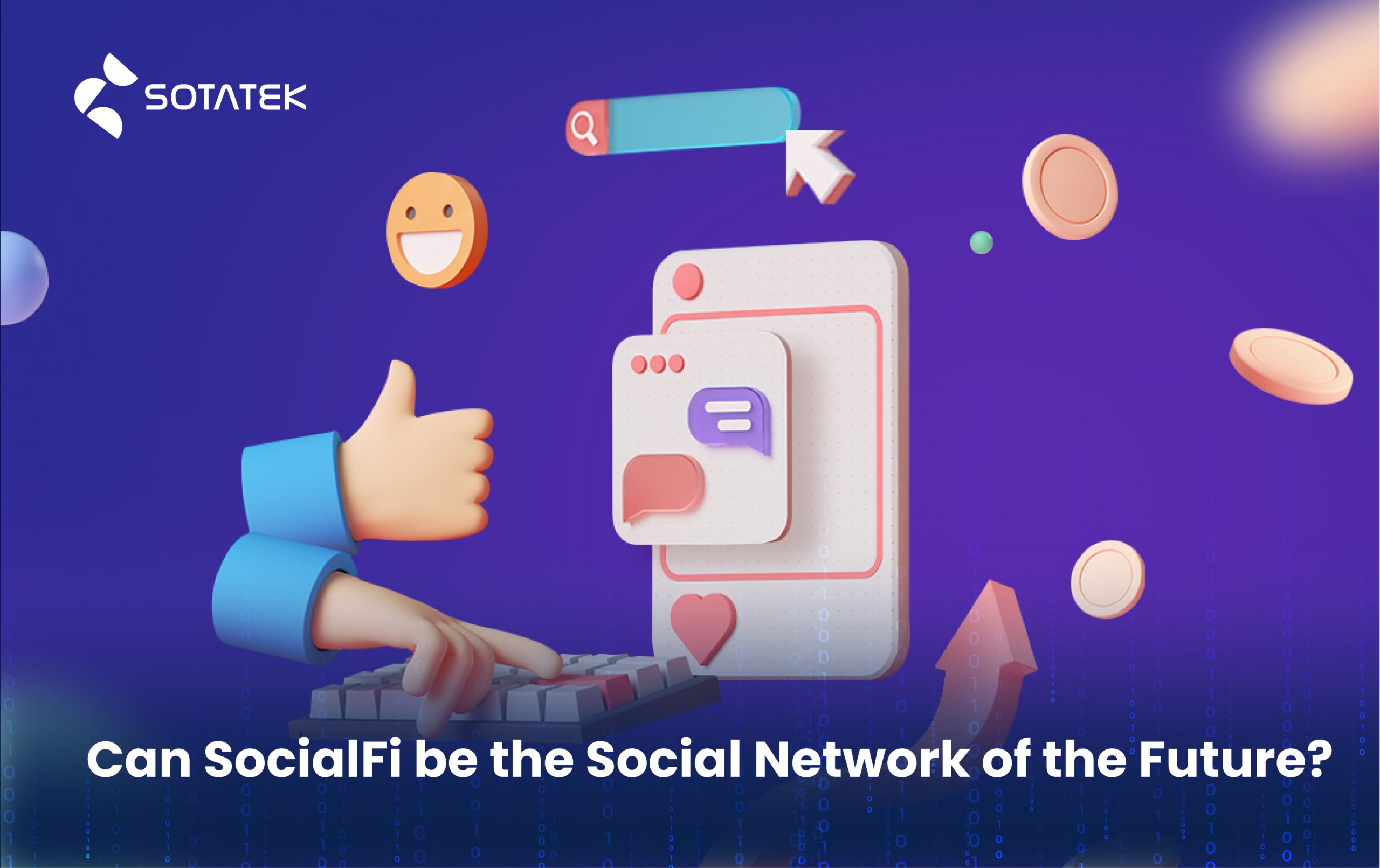The SocialFi market size is now estimated at $2-20 billion with more than 400 projects launched from 2018 to 2021. What is this trend and what can we expect from it?
1. What is SocialFi?
SocialFi is introduced as the fusion of social media and decentralized finance (DeFi). It shows a Web3 approach to social media, in which the platforms and their contents are entirely created, managed, and owned by their participants. SocialFi promises to give users, creators, and influencers better control of their data, freedom of speech, and monetization.
The key feature of SocialFi is that social media will not be censored and creators can get direct rewards through tokenization without going through a third-party vendor. The main exchange methods would be cryptocurrencies, while digital ownership and identity management would utilize NFTs.
2. The challenge of Web2 Social Media
The birth of SocialFi probably came from the effort of solving Web2 social media challenges. There are 4.70 billion social media users around the world in July 2022, equal to 59 percent of the total global population, yet all the data, engagement, and attention are monetized by a few entities and their stakeholders. “If the product is free, you are the product.”, this emphasizes how social media works and earns in the current state.
Freedom of speech is limited on these platforms. You might have encountered several cases where users, influencers, and content creators get banned for sharing content or opinions considered inappropriate for a certain group of people. While this process exists to protect users from harmful posts, a Web3 decentralized management system might be a better approach to please a broader user base.
The third issue is digital ownership, which mainly applies to creators publishing their content online. The lack of ability to track ownership opens loopholes for digital piracy and intellectual property violations.
Another challenge is the indirect earning of brand monetization. Web2 social media lacks the ability to provide influencers and creators a direct way to earn from their content, making them monetize their brands through other indirect methods. This pushes the urge to turn social engagement and following into direct revenues.

Distinguish apps among Web 1.0, 2.0 and 3.0
3. How does SocialFi Work?
SocialFi platforms stick to Web3 ethos by positioning themselves as decentralized social applications. Some worth mentioning platforms include Mousai (a Web3 music streaming platform), Diamond (messaging app), Deso (a decentralized social media protocol) and Entre (a Web3 professional networking app). These platforms receive praise from technology adopters due to how they try to improve the challenges of their Web2 counterparts.
a. Monetization
A key principle of Web3 applications is to manage incentives fairly across all stakeholders, which is enabled by DAO models. SocialFi apps utilize this by using the concept of social tokens or in-app utility tokens. These tokens can be created at a user level and creators can manage their own economies through social tokens. The value of this token will be placed based on the social value/ranking of that user.
b. Censorship
In Web3, it’s up to the individual to control and take responsibility for what is allowed in their own network. Instead of centralized censorship, the SocialFi platforms have decentralized curation through labeling on-chain data. All public posts are on-chain and labeled based on the topic and nature of the words. Each individual node will decide on what to block or engage with and will take full control and responsibility towards the post allowed in the node.
c. Digital Ownership
The hype on NFTs shows how the community values the importance of digital ownership and identity. By nature, NFT is the proof-of-ownership, with uniqueness lies in each NFT. Users can use NFTs as their profile and claim ownership by connecting their wallets.
NFTs in the SocialFi platform can also grant access to certain groups or communities which have exclusive content. NFTs creators can use the platform to broadcast their works and boost sales of their NFT collections.
Read more: NFT Development and Copyright: Challenges and Opportunities
To sum up:
- No censorship
- Decentralized governance allows more control
- Direct payment, no middleman fee
- Tokenization and direct rewards can take place
- NFTs define digital ownership
4. Future and challenges of SocialFi
The future of SocialFi is flourishing with 14 million users on SocialFi projects, out of which 5 million are active. Twitter’s opening for NFTs or Meta’s under-construction metaverse is a few examples of how market leaders are finding their way into Web3 social media.

Horizon World - Facebook’s Metaverse
However, there are two key challenges that Web3 must overcome: scalable infrastructure and sustainable economic models. It’s questionable whether blockchain can handle such large volumes of data and users generating every day like a Web2 social network. On the other hand, creating an economic model that sustains stress and difficult scenarios is still a hard case for SocialFi or even GameFi. All the incentive aspects discussed above are only experimented with on a small scale and still need to be stress tested through several market cycles before going mainstream.
5. Conclusion
SocialFi is undoubtedly in its infancy stage and still has a lot to uncover. Yet SocialFi holds great potential for the future of decentralized social platforms and creator economy models. As the world is moving towards the economy for creators, SocialFi opens a new way of interaction, information sharing, and revenue creation without a central authority. Whether SocialFi has what it takes to be adopted by the masses, only time will tell.



